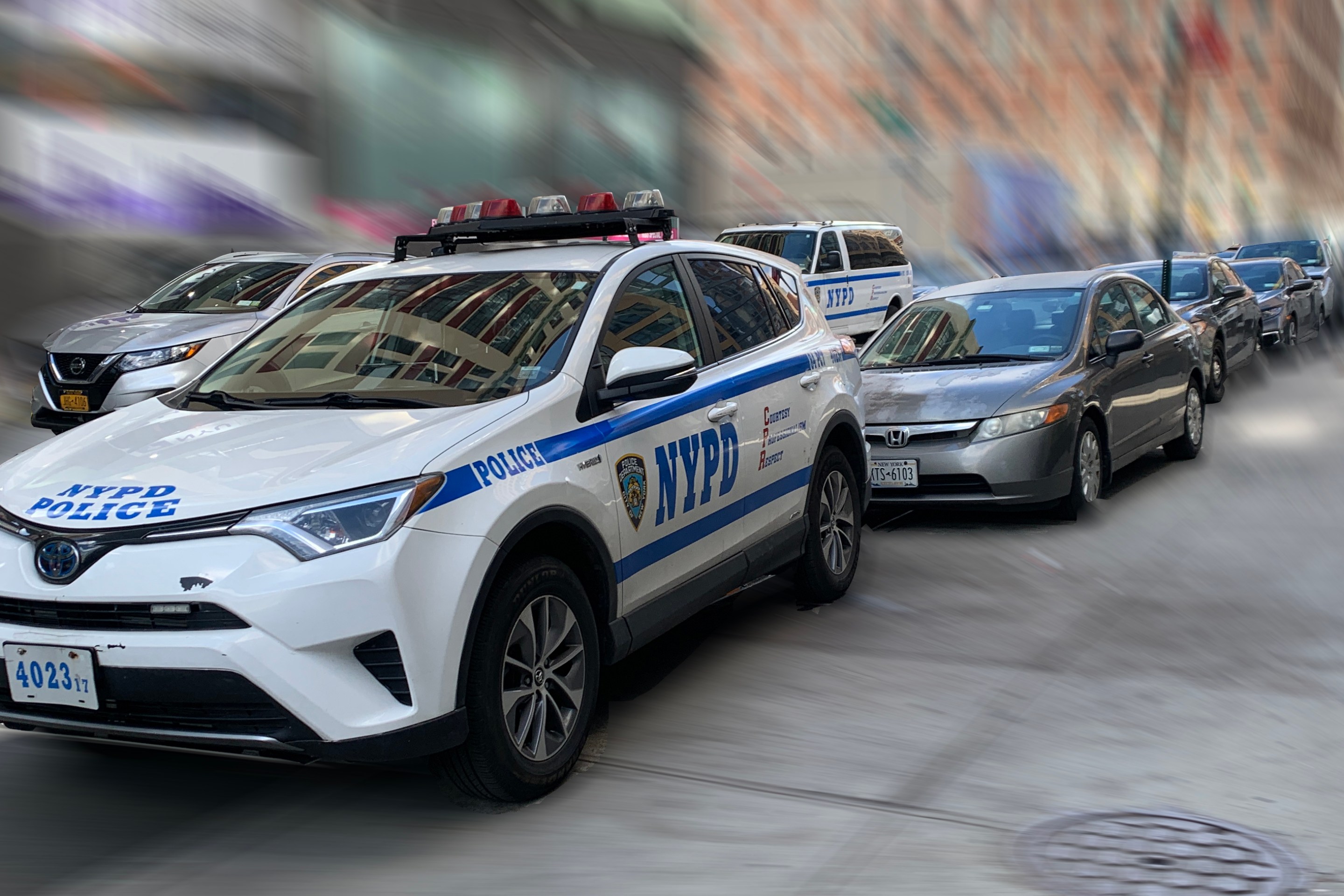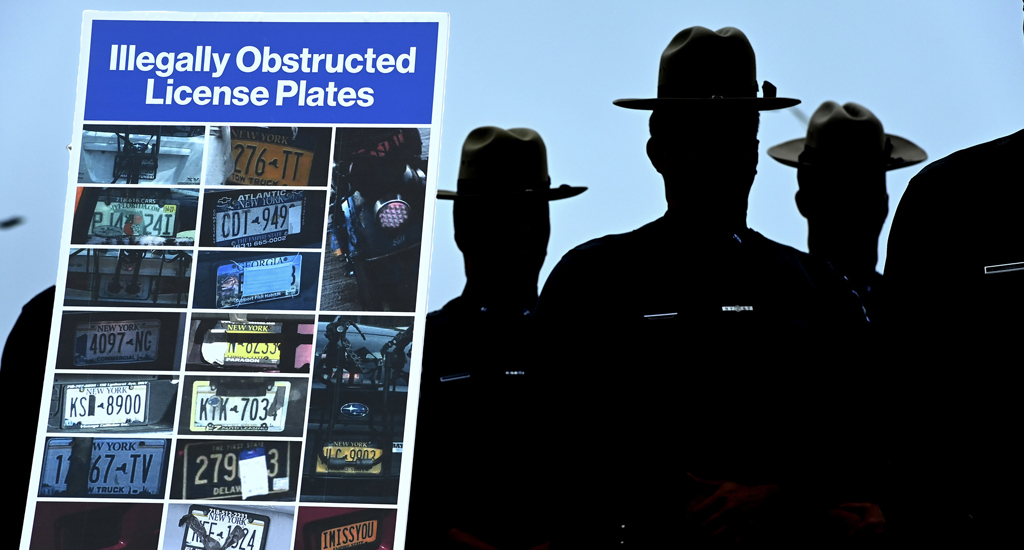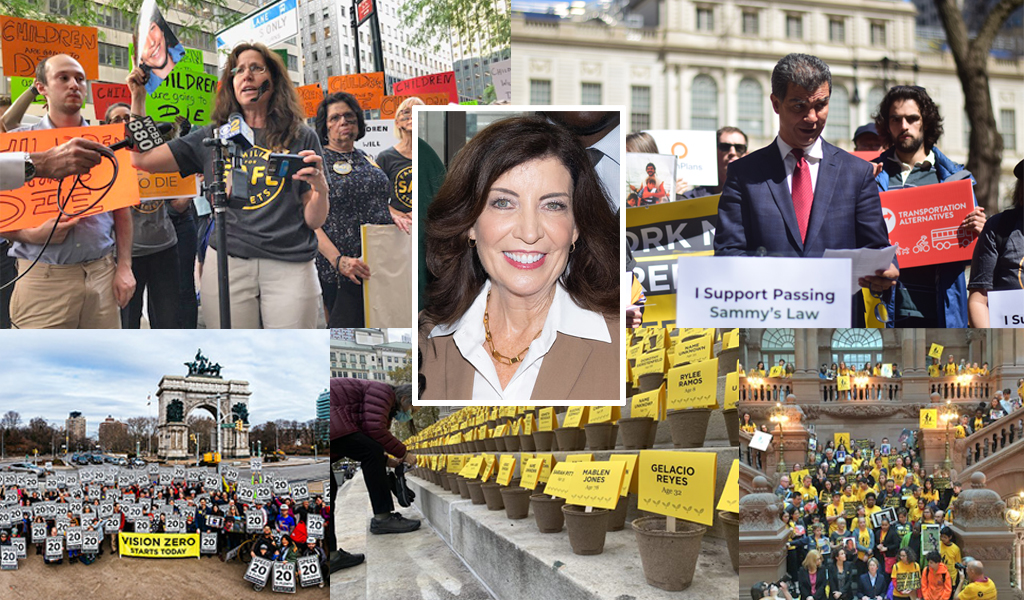Thruway Authority’s Tappan Zee “Fact-Check” Sets Cuomo’s Pants on Fire
2:04 PM EST on March 1, 2012





Looks like the Cuomo administration is starting to feel the heat for taking transit out of plans for the new Tappan Zee Bridge. A press release yesterday from the Thruway Authority shows the agency looking a bit defensive about its transit-free bridge, which has been criticized by an ever-growing number of Hudson Valley residents, municipalities and elected officials.
Purportedly busting myths about Tappan Zee transit, the press release actually puts forward a slew of obfuscations and untruths about the project. It's an aggressive effort to obscure the state's very real march backwards on sustainable transportation in Rockland and Westchester Counties.
Below, we fact-check the fact-check in exquisite detail.
The New York State Thruway today announced the release of these Myths vs. Facts about Mass Transit on the New Tappan Zee Bridge
MYTH: Mass transit is not part of the new Tappan Zee Bridge.FACT: The new bridge will support mass transit including bus rapid transit and commuter rail -- even before Rockland and Westchester Counties begin plans for a full mass transit system that could connect with the bridge.
Imagine if Cuomo had promised to put marriage equality to a referendum in 2030, then claimed that he supported gay marriage. That's what his administration is doing with transit on the Tappan Zee.
REAL FACT: Mass transit is not part of the new Tappan Zee Bridge. The state is building the bridge so as not to actively block transit from being added later -- though they've refused to verify even this -- but there's a world of difference between that and actually building something that can take you to work. Imagine if Cuomo had promised to put marriage equality to a referendum in 2030, then claimed that he supported gay marriage. That's what his administration is doing with transit on the Tappan Zee.
REAL FACT: Neither Rockland nor Westchester County was ever supposed to build the mass transit system on their side of the bridge. That role was always meant for the state, which has the capacity to deal with a substantial project of this kind. Both the state Department of Transportation and the MTA, not the local counties, were involved in the planning of the bus and rail systems meant to cross the new bridge. Putting the burden on the counties to plan, build, and fund the transit system is a major shift of the goal posts. "For ten years the state was involved, and the state was saying this is a state project," Tri-State Transportation Campaign executive director Kate Slevin told City and State today. "No big mass transit project in our region gets done without state support."
MYTH: Mass transit options are far in the future.FACT: The new bridge will have immediate, dedicated express bus service.
REAL FACT: The express bus service being mentioned is the Tappan Zee Express, currently operated by Rockland County. The new bridge will not have new bus service. Moreover, no one believes that the service, which runs infrequently in mixed traffic and costs more round-trip than the Tappan Zee tolls, is adequate for changing the way people travel cross-county. It's true that Cuomo's bridge won't proactively banish buses, but it won't do anything else.
REAL FACT: Improved mass transit options are, thanks to Cuomo, far in the future. The governor didn't put off the transit elements of the Tappan Zee Bridge plan; he killed them entirely. Ongoing planning efforts for bus and rail systems were cancelled. The MTA and Federal Transit Administration were disinvited from meetings. In its environmental review of the new bridge, the Cuomo administration declared that transit was officially dead: "the State Sponsors do not intend on advancing it in the foreseeable future."
MYTH: Mass transit will never be part of the Tappan Zee Bridge.FACT: The opposite is true. There can be no mass transit system without first building a new Tappan Zee bridge. The new bridge is being built to support bus and rail transit so that Rockland and Westchester can build a mass transit system to connect to the bridge.
REAL FACT: Even those who support postponing the construction of transit infrastructure don't think that the Cuomo administration is taking the necessary steps to ensure that transit will be built later. "The only way for mass transit to succeed on the bridge is if it is planned for now, during the initial design process," wrote the Regional Plan Association two days ago. Unless the state starts planning for transit, rather than offering empty promises, the odds are it won't materialize any more than transit across the George Washington Bridge ever did.
MYTH: Mass transit can be built now.FACT: A mass transit system in Rockland and Westchester requires 64 miles of construction in those counties at a cost of billions of dollars. There is no plan and no funding available to build a new mass transit system in the counties. However, if that changes, the new bridge will be able to accommodate it.
REAL FACT: There was a plan to build transit on both sides of the bridge. Governor Cuomo killed that plan. Arguing that transit can't be built on the Tappan Zee Bridge because you took transit off the approaches to the Tappan Zee Bridge is quite the act of chutzpah.
REAL FACT: There is no funding or financing plan for Cuomo's transit-free Tappan Zee Bridge either. The state has identified no source of funding other than tolls at this point, and the level of tolls needed to pay for the bridge without supplemental funding are higher than the state has said it's willing to charge for a crossing. Other sources of capital that have been mentioned, whether federal loans or pension investments, haven't been secured and would need to be paid back, just bringing you back to the same funding gap.
MYTH: We can afford to build mass transit now.FACT: Building this separate mass transit system through Rockland and Westchester Counties would cost up to $5.3 billion and once the system was built it could cost $80 million to operate it. This means it could cost more to build and operate a separate mass transit system then to build the new Tappan Zee Bridge.
MYTH: We can afford to build mass transit now.FACT: The $5.3 billion pricetag for a mass transit system means that the County Executives that want to build the system now will have to pay for it leading to the biggest tax and toll hike in Westchester and Rockland County history.
REAL FACT: In 2009, the state's own estimate for a bus rapid transit system was around $900 million. The projected cost of transit only zoomed into the billions in the Cuomo administration's environmental impact statement. Despite repeated inquiries by Streetsblog, other reporters and transportation advocates, the state has offered no explanation for why the cost of bus service suddenly skyrocketed. It's a peculiar kind of myth-busting where, after you present your facts, you refuse to explain them.
REAL FACT: Investing in transit would pay off in spades. The BRT system alone would save $100 million a year by reducing gas costs and speeding trips for weekday commuters alone, according to Streetsblog calculations. Throw in the costs of pollution, traffic crashes, and sprawl, all of which would be reduced by transit service, and the savings would grow larger. The additional tax revenue generated by transit service would count on the other side of the ledger. It is fiscally imprudent to take transit out of the plans for the bridge.
REAL FACT: At the same time as the state is pleading poverty when it comes to mass transit, the Cuomo administration is splurging on gold-plated automobile infrastructure for the bridge. The new Tappan Zee will be more than twice as wide as the current span. It will include a feature literally unheard of on similar bridges -- dedicated emergency vehicle lanes, which will add over $800 million to the cost of the bridge. Those emergency lanes could be converted into bus lanes in the future, but just as easily could be turned into new motor vehicle capacity.
MYTH: A full mass transit system is a fundamental part of building a new Tappan Zee Bridge.FACT: A full mass transit system would extend 64 miles from the bridge into Rockland and Westchester respectively. Currently the Counties have no plans in place to construct these 64 miles of mass transit. The entire bridge is only three miles and will support mass transit, if and when the Counties build it.
REAL FACT: The distance from Port Chester to Suffern is only 30 miles. To make the needed construction seem less feasible, the Thruway Authority is counting the lanes in each direction separately. Note that they aren't doing the same for the roadway; by this kind of math, the new 10-lane bridge would be thirty miles long.
MYTH: There is no mass transit on the bridge now.FACT: New York State already spends $2 million a year to provide Express Bus service across the Bridge, currently serving 499,000 riders per year and approximately 2,000 riders a day. The State will expand these services as market demand grows. However, numbers developed by New York's Planning body currently show that only 5,900 additional riders would cross the bridge on future Bus Rapid Transit, and that could only happen if the systems are in place on either side.
REAL FACT: There is indeed mass transit on the bridge, in the form of bus service, but there isn't any mass transit infrastructure. By definition, a trip on a bus in mixed traffic will always be slower than the same trip in an automobile; there's no speed advantage for the bus at any point. To get people to actually ride the bus, it's critical to build infrastructure that provides a trip that's actually faster than driving.
MYTH: The new Tappan Zee Bridge being built for drivers only.FACT: The new Tappan Zee Bridge will include a pedestrian walkway and bike lanes, in addition to the dedicated express bus service.
REAL FACT: A shared bicycle and pedestrian path -- there aren't any separate bike lanes planned for the bridge -- will be a nice feature of the bridge. But given the three-mile length of the bridge and the auto-centric land use on either side, it's hard to see the path serving large numbers of commuters. Unlike cross-county transit service, a bike-ped path likely has little potential to spur new, walkable development or ease congestion.
REAL FACT: It's inconceivable what "dedicated" could mean in this context. The existing bus service doesn't -- and under Cuomo's plan, won't -- have dedicated space on the roadway.
Stay in touch
Sign up for our free newsletter
More from Streetsblog New York City
Tuesday’s Headlines: Valley of Political Death Edition
Did you see the new poll showing congestion pricing is really unpopular? Ignore it! Good times are coming. Plus other news in today's headlines.
Open Streets Groups Warn of Extra Red Tape to Run Events
Two weeks notice for hopscotch or a yoga class?
Monday’s Headlines: A Federal Case over Parking Edition
We're flicking our bicycle bell over a big scoop last week that no one picked up on...yet. Plus other news.
Hochul, Legislators Reach Toll Evasion Crackdown Deal
Higher fines for covering a plate and for not paying tolls are part of the budget deal inked on Saturday.
Behind the Scenes: How Gov. Hochul Got ‘Sammy’s Law’ Over the Finish Line
Opponents didn't want to put their name on a no vote for the life-saving measure.




